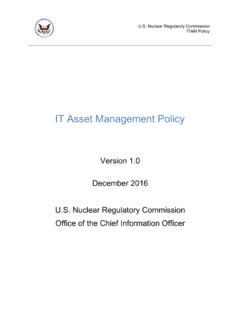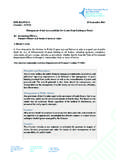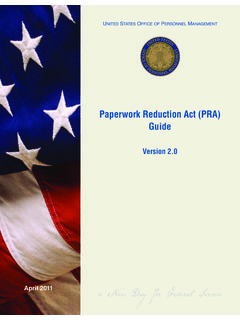Transcription of Scientific Management Still Endures in Education
1 Running head: Scientific Management Still Endures IN Education 1. Scientific Management Still Endures in Education Maduakolam Ireh, Education Department Anderson Center C131B. Winston Salem State University Winston Salem, NC 27110. Phone (336) 750 8619. Fax (336) 750 2892. E-mail: Publication/Completion Date: June, 2016. Scientific Management Still Endures IN Education 2. Abstract Some schools in America have changed, while others remain unchanged due largely to the accretion of small adjustments in what remains a very traditional enterprise. The problem is rooted in the propagation and adoption of Scientific Management by educators who applied and/or continues to apply it to Education to restore order and for accountability.
2 This essay discusses the enduring legacies of Fredrick Taylor's Scientific Management in American schools and contends that contemporary administrative practices should completely demystify this taunting philosophy around which the Management of many schools in America continue to be structured. Critical analysis of the historical relationship between Scientific Management principles and the administration of American public Education , discussion of the propagation of Scientific Management by popular early American school administrators, critique of Scientific control of competence and accountability in Education , and a critical analysis of the link between Scientific Management tasks and learning outcomes in American Education are provided.
3 Key Words: administration, educational, control, Management , principles, school, science. Scientific Management Still Endures IN Education 1. Scientific Management Still Endures in Education Introduction The impact of Scientific Management on Education Management in the United States is evident in practices Still found in many schools and school systems. Since the release of the report of the National Commission on Excellence in Education (1983) titled A Nation at Risk: The Imperative for Educational reform , hundreds of educational task forces have been organized in the United States (Crawford 1991, Bracey 2008, Hewitt 2008, Sally 2008, Lauren 2012).
4 Additionally, many states have generated more rules and regulations about all aspects of Education than before. These rules set out to raise standards, increase accountability, lengthen school days, enhance the rigor of the existing public Education system, etc. changes in the routine functions and operations of schools. Innovative curricula and teaching techniques, entrance and exit examinations for students, national standards for students and teachers, enhanced professional preparation and accountability ( , teacher examinations, teacher and administrator credentialing standards and certification processes), changing the physical structure of schools and classrooms, new content for students, and more rigorous teacher evaluations are a few of the changes being proposed at different levels (Rose 2011, Trujillo 2014).
5 These reform efforts that resulted in existing goals and structures being unchanged simply reinforced what existed without disturbing the structure of schools and without substantially altering the basic organizational features of the system (Cuban 1988a, 1988b, Rose 2011, Shannon 2012, Bridwell- Mittchell 2015). For example, the National Leadership Network Study Group on Restructuring Schools [NLNSGRS] (1991) reported that the existing system has failed in teaching basics such as thinking and reasoning, problem solving, use of information for knowledge production and Scientific Management Still Endures IN Education 2.
6 Learning, and so forth. They cited, among others, rapidly changing global economy, inability of schools to prepare the right kind of graduates America needs to occupy a dominant place in the world economy, high percentage of dropouts, large number of failing students hidden behind the mean scores on standardized tests, and increasing number of graduates who are not ready for work or for further learning as evidence of the failure of school administrators to reform American schools. The National Education Association (1990) noted that: the fashions of American public Education resemble a river into which flow tributaries of various strength.
7 When conditions are favorable, the waters of one of the tributaries make a substantial contribution to the river. When unfavorable conditions prevail, the tributaries slow to a trickle. The central river, however, is always the central river. Regardless of the merits of many of the innovations of Education reform , they did not alter the basic course of the river, which had its sources in the adoption of Scientific Management and the formation of district organizations that resembled turn-of-the- century corporations. (p. 39). Later, Gray (1993) argued that it may be inevitable that America will lose the race for international because its people are infected with a disease called Taylorism (p.)
8 371). Despite critisms such as those of NLNSGRS, the National Education Association, Gray and others recently (Au 2011, Stoller 2015), schools have remained unchanged due largely to the accretion of small adjustments in what remains a very traditional enterprise. The problem is deeply rooted in the propagation and adoption of Scientific Management with its emphasis on efficiency and control by educators who applied and/or continues to apply it to Education to restore order and accountability. This contention is supported by Au (2011) who noted in his review of the policies and practices of Education in the United States that much of the guiding Scientific Management Still Endures IN Education 3.
9 Rationale behind contemporary schooling is linked directly to Frederick Winslow Taylor's Scientific Management principles. This essay discusses the enduring legacies of Fredrick Taylor's Scientific Management in American schools and contends that contemporary administrative practices should completely demystify this taunting philosophy around which the organization and Management of many schools in the United States continue to be structured. While making critical review of Taylor's Scientific Management and analysis of the historical relationship between Scientific Management principles and the administration of American public Education , I will specifically (a) discuss the propagation of Scientific Management principles by popular early American school administrators and/or curriculum experts, (b) examine Scientific control of competence and accountability in Education , and (c) present a critical analysis of the link between Scientific Management tasks and learning outcomes in Education in America.
10 Taylor's Scientific Management Frederick W. Taylor's Scientific and managerial approach to the workplace maximized efficiency and productivity through the standardization of labor. Through motion and time study, Taylor vigorously studied body movements and assigned exact approximations of the time necessary to complete the labor. A primary principle of his Management approach was to eliminate opportunities of chance or accident through the Scientific investigation of every detail of labor. Scientific Management eliminated the need for skilled labor by delegating each employee one simple task to repeat over and over.



















